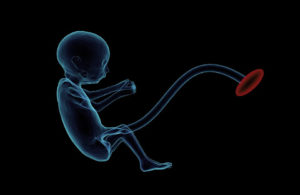CP Caused by a Prolapsed Umbilical Cord
The period preceding the delivery of a baby is a critical one, due to the many things that can go wrong. Once a mother-to-be’s water breaks, it’s imperative that the delivery proceeds in a smooth fashion to avoid any situations that may put the life of the baby in danger.
The umbilical cord is responsible for transporting nutrients and oxygen to the baby in the womb, as well as taking waste out from it. A prolapsed umbilical cord basically refers to the compression of this cord, effectively cutting off the child’s nutrient and oxygen supply.

Umbilical Cord Prolapse
An umbilical cord prolapse can occur in a number of different ways:
- Premature membrane rupture: When the membrane encasing the child in the womb ruptures early, the umbilical cord may get pushed down into the cervix before the baby starts making its descent. Due to this, the umbilical cord may become compressed between the baby and the birth canal during labor. If the umbilical cord is constricted for even a few minutes, the child’s brain can become starved of oxygen (hypoxia), which can lead to permanent brain damage and the development of cerebral palsy.
- A breech delivery can also lead to umbilical cord prolapse since the baby’s positioning might apply extra pressure to the cord for several minutes, interrupting the flow of oxygen.
- An abnormally long umbilical cord can also lead to prolapse since it has a higher chance of getting tangled up in the womb (or becoming a nuchal cord), especially if the labor process is prolonged.
- In a pregnancy involving twins or more than one baby, not only can an umbilical cord become compressed or compromised during gestation, but one child’s umbilical cord may even detach from the wall during the delivery of another child.
There are two types of umbilical cord prolapse:
- An overt prolapse (the most-common form) occurs when the umbilical cord precedes the baby through the cervix and into or beyond the vagina.
- An occult prolapse occurs when the cord moves alongside the baby during delivery. Both the cord and the baby fight for right of passage during delivery, leading to prolapse.
Properly-trained physicians should notice signs of fetal distress, and any problems concerning the umbilical cord should be mitigated early and urgently. This is because any interruption with regard to oxygen supply to the baby’s brain may lead to permanent brain damage.
The brain, being the master controller, is responsible for executing commands that tell the muscles and limbs to move in response to stimuli. The death of cells in the brain may effectively lead to the development of cerebral palsy, a motor movement disorder which affects a child’s limbs, muscles, gait, and balance.
What Could (or Should) the Doctor Have Done?
If doctors see or feel the umbilical cord present before the baby, they must make an important decision fast in order to mitigate any potential injury to the child. Commonly, a doctor will opt to perform an emergency C-section to quicken delivery, but depending on the situation, they may feel it more-appropriate to use delivery forceps or a vacuum extractor to help deliver the child. Another commonly-used tactic is to manually maneuver the baby while still in the womb in order to relieve pressure against the cord.
Nurses should keep close watch on the fetal heart rate monitor, as any signs of distress or deviation of the child’s heartbeat are obvious indications of a potentially serious problem.
If your baby developed cerebral palsy shortly after birth and you suspect this may be due to an umbilical cord prolapse, you may wish to discuss the facts of your case with a cerebral palsy attorney.
